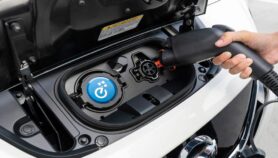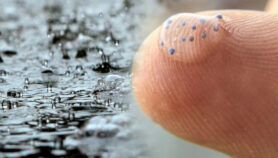By: Cristina Pabón
Send to a friend
The details you provide on this page will not be used to send unsolicited email, and will not be sold to a 3rd party. See privacy policy.
[LA PAZ] Doubt has been cast on a much-lauded method of disinfecting water using only sunlight, after a study found that it doesn’t reduce diarrhoea among children in families using the technique.
Solar Water Disinfection (SODIS), a low-cost water purification method that uses only sunlight to disinfect water, is currently used by about three million people in 30 countries, according to the SODIS Reference Center in Switzerland.
Contaminated water is poured into transparent plastic bottles and exposed to sunlight for six hours, killing pathogens with ultraviolet radiation (see Sun’s rays ‘can clean water in tsunami zone’).
Laboratory and community studies have shown that the method is effective. But a PLoS Medicine study published last week (18 August) on 22 rural communities in Cochabamba, Bolivia, found no significant reduction in diarrhoea among children aged five and under in families using SODIS.
The authors suggest that more research is needed into how the laboratory results can be replicated on the ground and until this is done they say that campaigners should be careful about advocating SODIS.
Mercedes Iriarte, co-author of the study and a researcher at the Water and Environmental Sanitation Centre of San Simón University, in Bolivia, told SciDev.Net that in the laboratory there is better control of all factors.
Iriarte says that in the laboratory, clean, clear, pH-neutral water is contaminated with known microorganisms to evaluate the method but that in the field researchers should consider other factors such as cloudiness of the water.
"Other variables are consumption of treated water from dirty containers and inadequate storage," she says. Children could also be infected with microorganisms from sources other than drinking water.
Margot Franken, a researcher with the environmental quality unit at San Andrés University in Bolivia, told SciDev.Net that low efficacy of the method could also result from inadequate exposure to sunlight. "Maybe people did not expose the water for enough time, did it on roofs that did not have optimal solar orientation — or they did it on cloudy days," she says.
Compliance was also low, with only a third of families using the technique despite 80 per cent claiming to.
In a comment about the study on its website, the SODIS Reference Center says that "numerous studies have reported health benefits of SODIS when it is correctly and consistently used".













